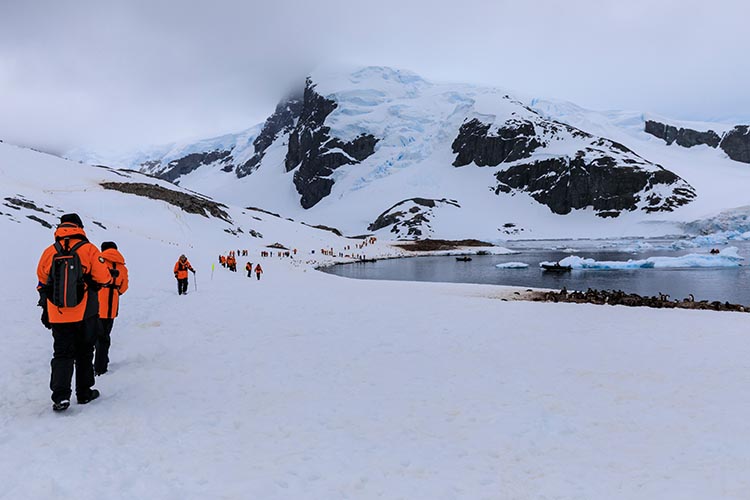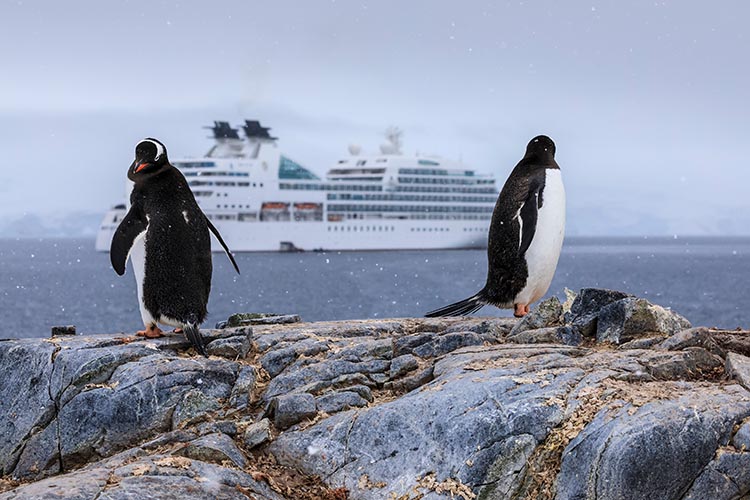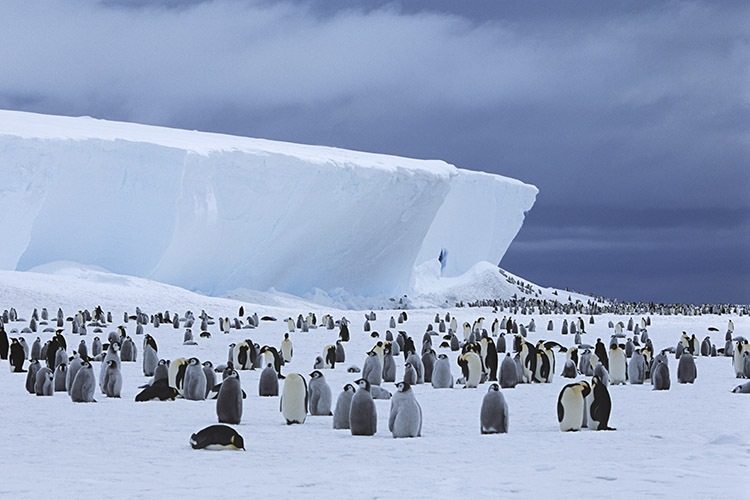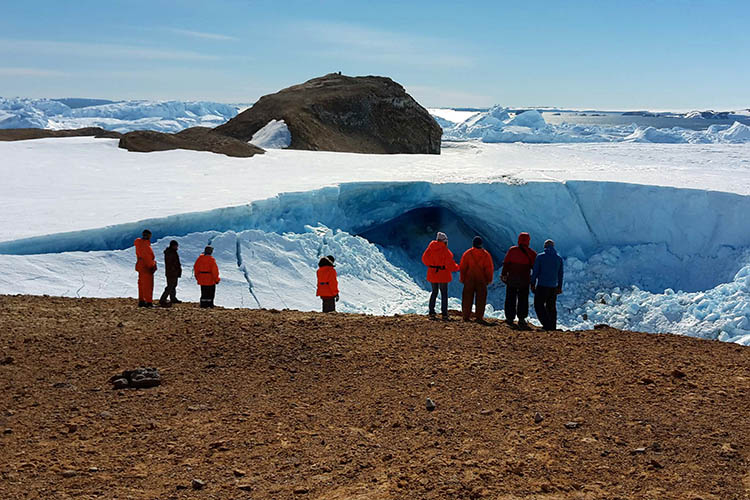
The rapidly growing number of tourists visiting Antarctica is raising concerns
By Susanna Gough
Antarctica may have no native human inhabitants, but its visitor numbers are growing. It is common knowledge that scientists frequently summer on the continent, conducting meteorological, wildlife, and astrophysical research. Beyond these important excursions however, Antarctica is becoming a desirable destination for even the more pedestrian of globetrotters. While in the 1980s the scientist population outnumbered any leisure travellers, in the 2022 season, the latter dwarfed the former by over twenty times.
Antarctica’s first tourists arrived in the 1920s. They were carried by the SS Fleurus, a Falkland Islands mail ship that sold a small number of round-trip ‘tourist’ tickets for its annual journey to the South Shetland Islands and South Orkney Islands (north of the Antarctic Peninsula), where it served the isolated whaling stations. In 1969, Swedish-American explorer and tourism pioneer Lars Eric Lindblad constructed the first custom-built expeditionary cruise ship, the MS Explorer, and by the 1970s, the continent was receiving a few hundred visitors every year.

How do Tourists Visit?
Most excursions involve short departures from cruise liners that do not venture far onto the continental mainland. 32,730 of this year’s visitors did not leave their cruise ships. All but two per cent of the continent is permanently under ice, and the majority of visitors are concentrated along a 500-kilometre stretch of the northern Antarctic Peninsula. Jutting out towards southern Argentina, the Antarctic Peninsula is the continent’s most accessible point. In 2021-22, Cuverville Island received 8,511 landings. The top four landing destinations just under, all receiving between 6,370 and 7,457 boat arrivals, were Neko Harbour, Whalers Bay, Danco Island, and the Half Moon Island Chinstrap Colony.
Nonetheless, some more intrepid sightseers fly into the Antarctic interior. At only around 1% of the total tourist population, these expeditions are far less accessible to the average person. 1,343 people went on deep field visits into the interior this year. Private plane travel is not unheard of, and is often necessary for mountaineering trips to the Transantarctic Mountains which bisect the continent’s interior. In November 2021, the first Airbus A340 landed in Antarctica.
Many of the mountain peaks loom higher than four thousand metres. The majority have not been climbed due to intense weather conditions and the meticulous planning necessary. For many mountaineers however, the bigger the challenge, the bigger the reward, and the American Alpine Club declared back in 1999 that the Antarctic is ‘the mountaineering destination of the twenty-first century’, because of this allure of unchartered territory. One in three Antarctic tourists are from the USA.

What is the Environmental Impact?
There are 1,142 known animal species live in Antarctica, some incredibly charismatic such as emperor penguins, leopard seals, albatrosses, and blue whales. Most of this wildlife is concentrated in the same coastal areas that people visit – the comparably hospitable regions of the Antarctic Peninsula. Unlike its human visitors, these animals are native to the continent. For the past 15–30 million years, Antarctica’s endemic species have been isolated from ecosystems outside the Antarctic Ocean, making them particularly vulnerable to change.
A recent study found elevated concentrations of black carbon – soot – in the snow around popular Antarctic tourism sites, which causes snow to darken and melt more rapidly. Researchers have also identified 14 non-native species around the Antarctic Peninsula, transported on clothing and in food.
The IUCN reported this month that tourist activities are causing penguin species to change their characteristic behaviours, calling for stricter safeguards against disturbance of wildlife. They also discussed the intersection of these tourism impacts with climate change. Reduced sea ice will unlock new areas that tourists can access, compounding the effects of global warming.
How is Tourism Regulated?
In 2009, the Antarctic Treaty Consultative Meeting discussed the impact of tourism on the environment, and established careful practices. With the International Association of Antarctica Tour Operators (IAATO), regulations and restrictions were placed on the number of tourists at any given time, wildlife watching, and the nature of tourist activities. In 2017, the International Maritime Organization established a Polar Code which limited very large cruise vessels from entering Antarctic waters.
The vast majority of tour operators are IAATO members, and comply with regulations on their staffing, interactions with wildlife, and disposal of waste. Tourists are encouraged only to travel with these licensed professionals, for the safety of not only the wildlife, but themselves too.

Some areas are completely out of bounds, including Sites of Special Scientific Interest. Many scientific stations do not allow visitors, to maintain the safety and integrity of their research.
The cost of a cruise to Antarctica starts at £5,000 per person and can reach as much as £40,000 per person.




